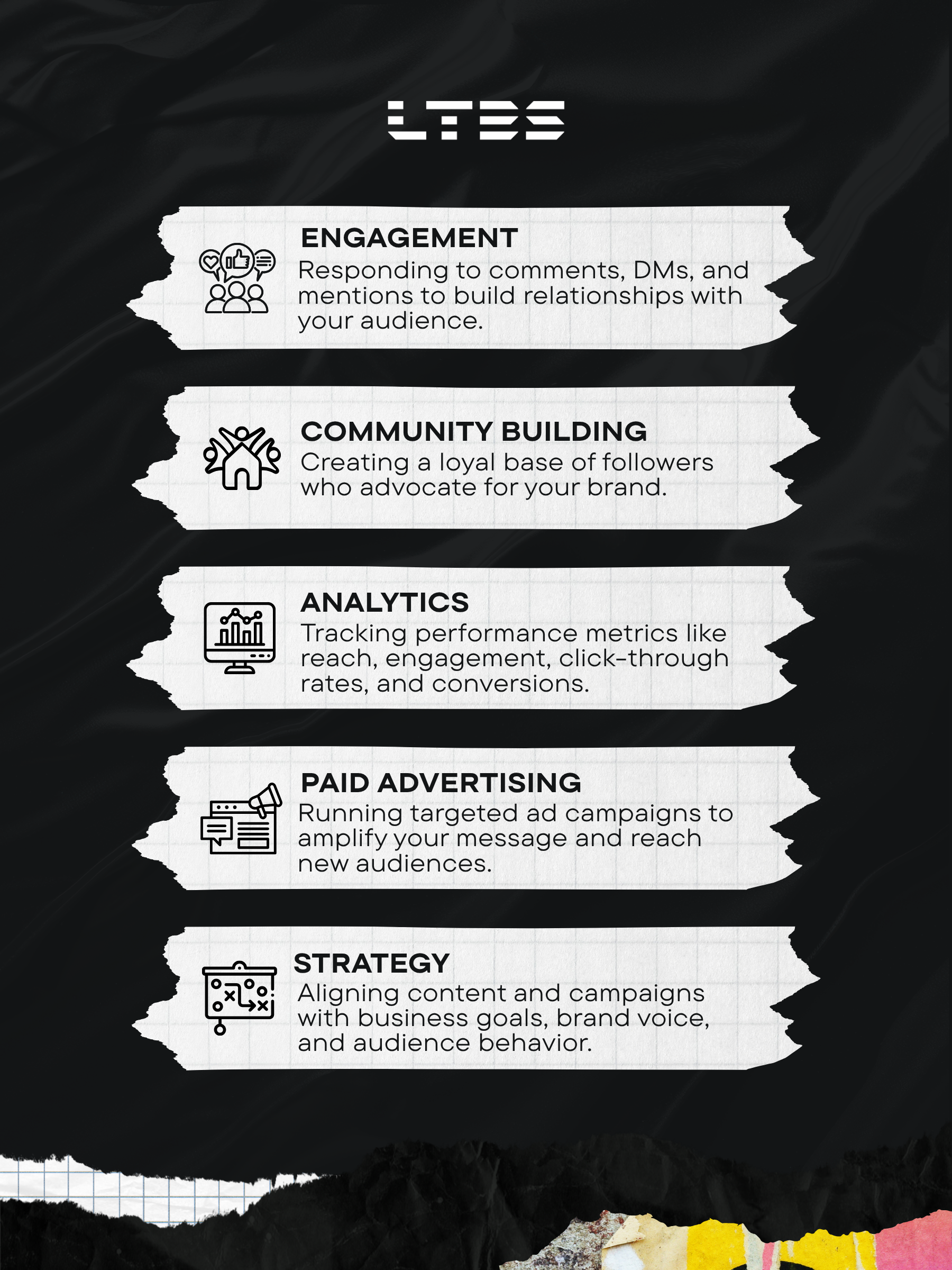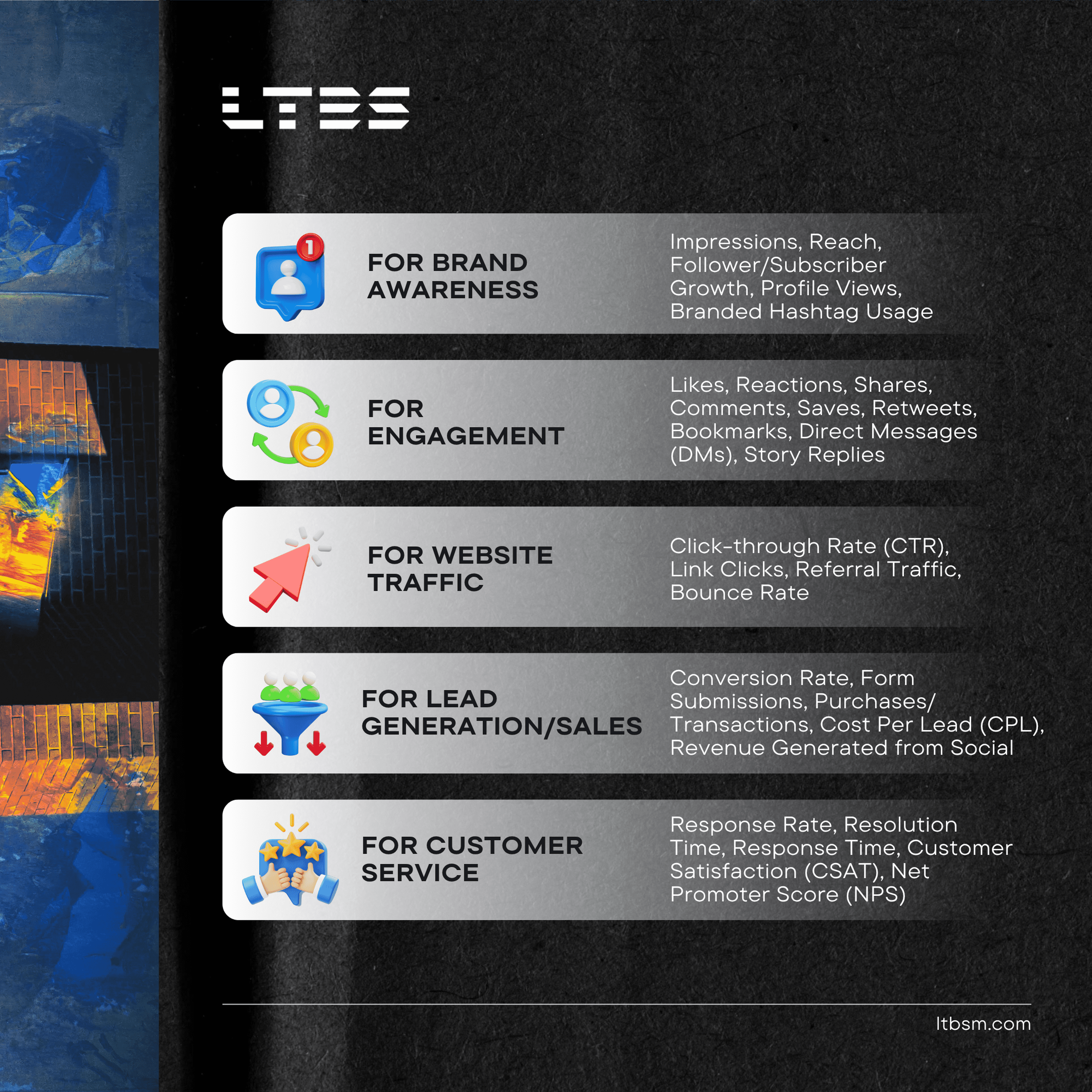Social Media Marketing 101: How to Build a Brand People Talk About

Adam Baodunnov

Building a buzzing social media presence is both an art and a science. So let me tell you a quick story about how a brand can crack digital marketing code through social media.
Platforms like TikTok boast a massive and highly engaged user base, especially among younger demographics. If you want to promote your brand, TikTok can be the ideal platform, just like it was for skincare brand CeraVe.
In early 2024, CeraVe found itself at the center of an unexpected online rumor, that actor Michael Cera was the founder of the brand. Here's the thing about business: when they become the focus of attention due to false or bizarre rumors, their first instinct is usually to shut it down quickly and protect their image.
And instead of shutting it down, CeraVe leaned into the internet joke and launched a playful campaign featuring Michael Cera himself. Influencers captured him signing CeraVe bottles, lugging giant bags of the product, and handing them out to random pedestrians, leaving the internet stunned.
The campaign reached its peak with a Super Bowl ad where Cera comically tried to convince viewers he founded CeraVe. His over-the-top, satirical performance ended with real dermatologists having skepticism on his claim.
Here’s the twist: CeraVe started the rumor. They built the story from scratch, took it to TikTok, got influencers talking about it, and featured it all the way to a Super Bowl ad, making every decision and dollar count.
To everyone’s surprise, it's a massive buzz across social media, with internet users applauding CeraVe’s creativity and authenticity. The campaign didn’t just generate laughs; it clarified misconceptions and strengthened the brand’s image as trustworthy and in tune with its audience.
CeraVe’s approach perfectly demonstrates the power of embracing unexpected narratives and turning them into genuine brand-building moments, all while reinforcing its commitment to science-backed skincare. It proves that even a broken window can’t be damaged when it's handled with humor and transparency.
Furthermore, this story showcases how powerful social media marketing (or SMM) is. It's not just about raking up a few thousand likes and shares. It's about constantly reinventing yourself to stay relevant and top of mind for people to not forget you.
In a country where nearly 8 in 10 people are active on social media and the average Aussie spends close to 2 hours a day scrolling, you have a huge opportunity to get your brand seen and spark conversations around it.
Whether you run a big business with millions in revenue or a local shop in Melbourne, the key is to engage Australian audiences in a way that feels authentic, relevant, and conversation-worthy.
At LTBS, we will guide you through the importance of social media marketing and show you how to strengthen your social media presence with engagement techniques tailored to Aussies, tips on choosing the right platforms, and content ideas that spark real conversations.
What is Social Media Marketing?
Social Media Marketing (SMM) is the practice of using social media platforms to connect with your target audience to build your brand, increase sales, and drive website traffic. It involves creating and sharing content from text, images, videos, and stories that are customized for specific platforms like Facebook, Instagram, LinkedIn, TikTok, X (formerly Twitter), Pinterest, and YouTube.
But SMM goes beyond just posting content. It also includes:

Social media marketing isn’t just a promotional tool, it’s a powerful way to humanize your brand, tell your story, and stay relevant in a constantly evolving market.
Social media marketing strategy: Step-by-step
Step 1: Know Your Audience
The first step to social media success is understanding who you’re talking to. Every consumer has their own habits, humor, and cultural references that your content should reflect. Start by researching your target audience’s demographics and interests within your area.
- Understand Social Media Usage: Nearly every adult age bracket is now active on social media, from Millennials to Gen Z to Baby Boomers. It is important to know your audience’s preferred platforms, content types, and peak engagement times.
- Identify Your Audience Profile: Build a comprehensive audience profile using both demographic (age, location, job title) and psychographic (values, motivations, lifestyle) data.
- Local Culture & Humor: People respond positively to content that makes them laugh or tells an interesting story, even Aussies love a good joke. Add local wits or relatable contents to your post, you just have to keep it authentic and in good taste.
- Regional Interests: If you want to get local audiences talking, tap into what matters to them, whether it’s sports, arts, weather, food culture, or current events—what matters is they can relate to the content.
Remember, social media users stay online to connect and be entertained so if you show that you understand their world, they’re far more likely to interact with your brand.
LTBS Expert tip: If you don’t know who your target customers are? The best place to start is by looking at historical sales data to see which demographics are buying from your business.
Step 2: Set Clear and Measurable Goals
Before diving into content creation or picking the right platforms, it’s crucial to identify your business objective or define what success looks like for your brand on social media. Without clear goals, you’re just posting into the void.
This step is crucial because social media isn't just about likes and follows, it's about driving real business outcomes. Clear goals give your content direction, adjust strategies as needed, and keep your team focused. Ask yourself: Do you want to
- Increase brand awareness?
- Drive website traffic?
- Generate leads or sales?
- Build a loyal community?
- Improve customer service and response times?
Use the SMART Goal framework to guide your goal-setting in the business world.
- Specific – Clearly define what you want to achieve.
- Measurable – Ensure your goal can be measured.
- Achievable – Make sure it’s realistic for your resources.
- Relevant – Tie it directly to your business objectives.
- Time-bound – Set a deadline to achieve the goal.
Another important step is choosing the right metrics for your business. Align your goals with the appropriate key performance indicators (KPIs). Here are a few examples:

LTBS Expert Tip: Create a simple dashboard or use analytics tools built into platforms like Facebook Insights, LinkedIn Analytics, or Google Analytics for traffic tracking) to monitor your goals regularly. This lets you spot trends early, double down on what works, and adjust what doesn’t.
Step 3: Choose the Right Social Platforms

After identifying your objectives, it is now time to evaluate what social media platforms you're going to use. As a matter of fact, not all social media platforms are created equal. Focus your efforts on the platforms where your audience is most active and where it makes sense for your brand. Here’s a quick rundown:
- Facebook: Still the biggest platform globally, it’s great for broad audience engagement, community building, and brand storytelling. Using Facebook Groups, Events, and Reels are useful tools to boost visibility.
- LinkedIn: These are perfect when you’re targeting professionals or other businesses like the corporate services, tech companies, consultancies, or even recruiters. It’s the go-to space for sharing industry insights, celebrating company milestones, and establishing thought leadership. LinkedIn also tends to deliver higher organic engagement than other platforms, making it a cost-effective way to build trust and authority in your industry
- Instagram: Reels and stories drive strong engagement in today’s visually driven world. These formats are especially popular among adults, young adults, and younger audiences. This platform is great for showcasing attractive imagery or videos of your products and for influencer collaborations.
- TikTok: The new kid on the block with explosive growth. If your brand can showcase personality through short, catchy videos or challenges, TikTok is worth considering. Many brands have gone viral by jumping on TikTok trends or creating their own.
- YouTube: Excellent for long-form content, tutorials, behind-the-scenes videos, and influencer collaborations.
- X (formerly Twitter): Although not as widely used for brands, it still has a niche user base. It’s popular for news, sports fandom, and quick updates. If your brand is in media, entertainment, or you want to engage with customers in real-time, X can be useful.
LTBS Expert Tip: Consider your buyer persona to understand which platforms your target audience prefers. Focus on platforms where your target audience already hangs out. You don’t have to stick to just one platform, building a presence across multiple channels can help you reach a broader audience and reinforce your brand message consistently.
Step 4: Research Your Competitors’ Social Media Strategies
Before building your own strategy, take a close look at what your competitors are doing. A competitive analysis helps you understand both your strengths and weaknesses, as well as your competitors’.
Start by checking what types of posts they publish, how often they post, and what tone they use. Identify which posts receive the most likes, shares, or comments, and whether the audience interaction is positive. Studying their social media presence helps you see what works, what doesn’t, and where you can differentiate your brand.
Beyond content, look at who their target customers are and how they engage with them. Ask yourself: Are they genuinely interacting with their audience? What kind of tone or approach do they use when responding? Are their replies helpful, warm, frustrated, or robotic?
Most important is to look for gaps, are there audience segments or content types they’re ignoring that you could claim as your own? Once you gather these insights, use them to refine and optimize your own social media strategy.
Step 5: Create Content that Everyone will Love (Educational, Entertaining & Engaging)
Now that you know your audience and have chosen your platforms, it’s time to focus on the heart of marketing: content. To get people talking about your brand, your content needs to strike a chord, it has to be interesting, relevant, and engaging.
Good content doesn’t just inform or sell—it connects. Whether it’s a blog post, video, infographic, or photo, every piece of content is an opportunity to build a real connection with your audience.
There are countless ads and posts competing for attention online, so your content needs to stand out and make your audience stop scrolling. The best way to know what kind of content to create is by going back to step 1: know your audience.
What do they need from your content? Should it be informative? Problem-solving? Relatable? People are more likely to engage with content they can connect with and learn from.
Here are some of the options available to you on what kind of content you need to make.
- Educational Content: Teach your audience something useful such as the how-tos, tips, FAQs, or industry insights
- Entertaining Content: Grab attention with memes, trends, behind-the-scenes moments, or fun challenges.
- Inspirational Content: Share real stories, quotes, or brand values that spark emotion and build connection.
- User-Generated Content (UGC): Feature your customers, make their reviews, photos, or videos known in order to build trust and community.
- Promotional Content: Show upcoming products to build anticipation. Announce product launches, sales, offers, or exclusive deals
- Interactive Content: Engage directly through polls, Q&As, quizzes, or comment prompts.
- Thought Leadership: Share expert opinions, industry trends, or professional tips to build credibility
- Visual Content: Use eye-catching photos, reels, infographics, or branded graphics to stand out.
There are plenty of content formats to explore, and variety is key. Mix it up to keep things fresh and appeal to a broader audience. Be creative, tap into current trends, and let your brand’s voice shine because social media is the best place to express your personality.
Moreover, if you’re ever stuck for ideas, return to Step 4 and study your competitors. See how they approach content creation, what works for them, and where you can do it better.
LTBS Expert Tip: Mix your content types to keep your audience engaged. Use the 80/20 rule where the aim is 80% value-driven content (educational, emotional, or entertaining) and 20% promotional content of products.
Step 6: Make a Content Calendar
A great strategy means nothing without consistency, and that’s where a content calendar comes in. Planning your content in advance helps you stay organised, post regularly, and align your messaging with key dates, launches, and campaigns.

Creating a content calendar also relies on the first step: knowing your audience. By understanding your audience, you know their preferred social media channels and when they’re most active online.
For instance, if you’re aiming your posts at busy professionals, you’ll need to upload them outside of working hours. Considering the right timing is also essential to make all of this work.
A content calendar helps you balance your content types, avoid last-minute stress, and allows time to prepare visuals, infographics, videos, and captions. Most important of all, it lets you take advantage of global trends, holidays, and events.
LTBS Expert Tip: Treat your content calendar as your creative roadmap, not a rigid checklist. Planning ahead keeps your brand consistent, but staying flexible keeps it human, timely, and relevant. You can use tools like Google Sheets, Notion, and Trello in managing your calendar efficiently.
Step 7: Engage, Engage, Engage – Foster Community Interaction
Posting great content is only half the battle, but social media is a two-way street, and so is trust, which is a major currency in the business world. In fact, according to Q1 2024 Sprout Pulse Survey data, how a brand responds on social media has the second greatest impact on whether or not consumers trust it.
When someone engages with your content, you should reply since they appreciate prompt and friendly responses. This applies not only to public comments but also to DMs and private messages. Even a simple answer to a question can turn a casual follower into a loyal fan and it shows there are real people behind your brand who care.
Each platform has its own strategy for engagement:
- Instagram: After posting, you can keep the conversation going by adding posts to your Stories related to what you posted. This drives more visibility and encourages replies, reactions, and shares.
- X (formerly Twitter): Use relevant and trending hashtags to enter ongoing conversations, especially local or niche hashtags that align with your brand.
- Facebook: Many marketers prioritise building or participating in Facebook Groups that aligned with their brand for their effectiveness in building local community engagement and discovery. It helps foster deeper interaction, and many marketers prioritise them for their effectiveness in building local community engagement and discovery. However, you can also join existing groups as your business or personal profile and contribute genuinely by answering questions or offering tips, no hard selling needed just genuine connection.
- LinkedIn: For B2B and professional engagement, LinkedIn is essential. Encourage your team members to stay active on the platform as they can amplify your brand’s voice through their networks. For example, if your CEO shares a post about a recent project and invites discussion, the engagement that follows can spotlight your brand’s expertise. Furthermore, you can also celebrate others too. When someone in your network wins an award or posts something valuable, leave a thoughtful comment. Being supportive encourages others to engage with you in return.
LTBS Expert Tip: Show you care. Block 15-30 minutes daily just for community engagement because your audience is constantly telling you what matters to them, through their comments, messages, and reactions. Pay attention, start conversations, and let their feedback guide your content strategy. That’s how you turn engagement into connection, and connection into loyalty.
Step 8: Be Consistent, Measure, and Adapt
By now, you’ve set up a strategy and started posting and engaging. The final step is an ongoing one: consistency and continuous improvement.
Maintain a regular posting schedule so your followers know you’re active. An abandoned Facebook page or a LinkedIn profile that hasn’t posted in months won’t spark conversation and you can see it through your analytics.
All major platforms offer analytics where you can see which posts got the most likes, comments, shares, click-throughs, etc. Pay attention to these metrics. Because through it you can decide on the flow of your contents and what makes them keep entertained.
Social media trends and user behaviors change, so be ready to adapt. Perhaps six months ago your Facebook reach was great, but now you notice a dip, maybe it’s time to experiment with a small paid promotion or focus more on engaging content like live videos or stories.
The idea is to stay agile. Regularly revisit Steps 1-7: Has your audience changed or grown? Are there new trends or cultural moments to tap into? Is your content still resonating? By staying curious and open to change, you’ll keep your social presence fresh and interesting
Social media marketing is an ongoing learning process. By measuring your results and being willing to tweak your strategy, you ensure that your social media presence doesn’t go away. Instead, it continually evolves to keep your audience engaged and talking.
LTBS Expert Tip: Run a content audit every quarter. Ask yourself: What’s working? What’s not? What’s missing? Use those insights to revise and improve your strategy because social media is constantly evolving, and your content needs to evolve with it.
How LTBS Can Help?
Making people talk about your brand and keeping it relevant in this fast-paced digital world is not an easy task. Building a strategy from the ground up takes time, insight, and consistency. But one thing is certain: on social media, success starts with creating real, raw, and meaningful dialogue with your audience.
People want to engage with brands that speak to them, not at them. When you understand your audience, focus on the right platforms (Facebook, LinkedIn, and beyond), craft content that educates or entertains, and actively participate in your community, you create space for conversations that amplify your brand voice over the long term.
That’s where Local Threads Brand Solutions (LTBS) comes in. We don’t just help you manage your content, we work alongside you as your strategic growth partner.
As your strategic growth partner, we offer a full suite of services designed to elevate your brand from digital strategy and planning to content creation and social media management, allowing us to align your business goals with creative execution and consistent audience engagement.
We deliver compelling content, from social media visuals and branded videos to long-form blogs. Our SEO strategies also improve your discoverability and ensure your brand shows up where it matters most, while helping you earn the credibility and exposure you deserve.
We ensure your digital home is as strong as your social presence that is built to impress, convert, and retain.
Want to learn how LTBS can help you grow your brand? Let LTBS help you build a brand that people don’t just follow, but they believe in. Contact us now to book a consultation with our team and discover how we can take your digital presence to the next level.
